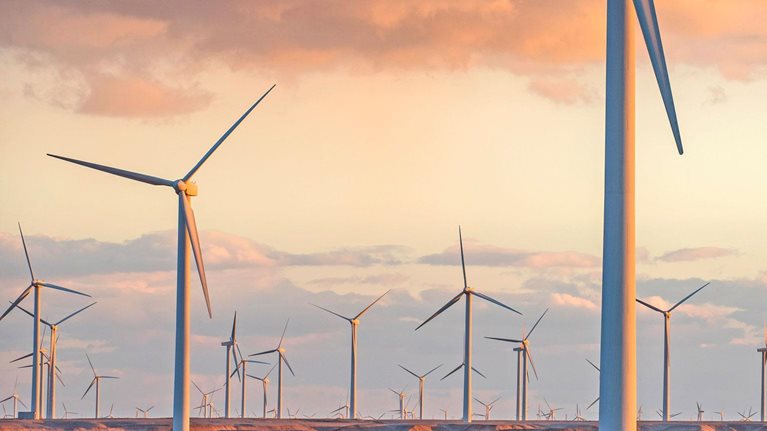A few years ago, resource strains were everywhere: prices of oil, gas, coal, copper, iron ore, and other commodities had risen sharply on the back of high and rising demand from China. For only the second time in a century, in 2008, spending on mineral resources rose above 6 percent of global GDP, more than triple the long-term average. When we looked forward in 2011, we saw a need for more efficient resource use and dramatic increases in supply, with little room for slippage on either side of the equation, as three billion more people were poised to enter the consumer economy.
While our estimates of energy-efficiency opportunities were more or less on target, the overall picture looks quite different today. Technological breakthroughs such as hydraulic fracturing for natural gas have eased resource strains, and slowing growth in China and elsewhere has dampened demand. Since mid-2014, oil and other commodity prices have fallen dramatically, and global spending on many commodities dropped by 50 percent in 2015 alone.
Even though the hurricane-like “supercycle” of double-digit annual price increases that prevailed from the early 2000s until recently has hit land and abated, companies in all sectors need to brace for a new gale of disruption. This time, the forces at work are often less visible and may seem smaller-scale than vertiginous cyclical adjustments or discovery breakthroughs. Taken together, though, they are far-reaching in their impact. Technologies, many having little on the surface to do with resources, are combining in new ways to transform the supply-and-demand equation for commodities. Autonomous vehicles, new-generation batteries, drones and sensors that can carry out predictive maintenance, Internet of Things (IoT) connectivity, increased automation, and the growing use of data analytics throughout the corporate world all have significant implications for the future of commodities. At the same time, developed economies, in particular, are becoming ever more oriented toward services that have less need for resources; and in general, the global economy is using resources less intensively.
These trends will not have an impact overnight, and some will take longer than others. But understanding the forces at work can help executives seize emerging opportunities and avoid being blindsided. Our aim in this article is to explain these new dynamics, and to suggest how business leaders can create new strategies that will help them not only adapt but profit.
A technology-driven revolution
To understand what is going on, consider the way transportation is being roiled by technological change. Vehicle electrification, ride sharing, driverless cars, vehicle-to-vehicle communications, and the use of lightweight materials such as carbon and aluminum are beginning to ripple through the automotive sector. Any of them individually could materially change the demand and supply for oil—and for cars. Together, their first- and second-order effects could be substantial. McKinsey’s latest automotive forecast estimates that by 2030, electric vehicles could represent about 30 percent of all new cars sold globally, and close to 50 percent of those sold in China, the European Union, and the United States.
That’s just the start, since vehicles for ride-sharing on local roads in urban areas can be engineered to weigh less than half of today’s conventional vehicles, much of whose weight results from the demands of highway driving and the potential for high-speed collisions. Lighter vehicles are more fuel efficient, use less steel, and will require less spending on new roads or upkeep of existing ones. More short-haul driving may accelerate the pace of vehicle electrification. And we haven’t even mentioned the growth of autonomous vehicles, which would further enhance the operating efficiency of vehicles, as well as increasing road capacity utilization as cars travel more closely together. Several million fewer cars could be in the global car population by 2035 as a result of these factors, with annual car sales by then roughly 10 percent lower—reflecting a combination of reduced need as a result of sharing but also higher utilization and therefore faster turnover in vehicles and fleets.
Would you like to learn more about our Sustainability & Resource Productivity practice?
The upshot of all this isn’t just massive change for the automotive sector, it’s a shift in the resource intensity of transportation, which today accounts for almost half of global oil consumption and more than 20 percent of greenhouse-gas emissions. Oil demand from light vehicles in 2035 could be three million barrels below a business-as-usual case. If you include the accelerated adoption of lighter materials, oil demand could drop by six million barrels. We may see “peak” oil—with respect to demand, not supply—around 2030. (For more, see “Is peak oil demand in sight?”)
Many other commodities face similar challenges. Natural-gas demand has been growing strongly as a source of power generation, especially in the United States and emerging economies. We see no signs of electricity demand abating—on the contrary, we expect demand for electricity to outpace the demand for other energy sources by more than two to one. But the electricity-generation mix is changing as solar- and wind-power technology improve and prices fall; wind could become competitive with fossil fuels in 2030, while solar power could become competitive with the marginal cost of natural-gas and coal production by 2025. Fossil fuels will continue to dominate the total energy mix, but renewables will account for about four-fifths of future electricity-generation growth.
Metals will be affected, too. Iron ore, a key raw material for steel production, may already be in structural decline as steel demand in China and elsewhere cools, and as recycling gathers pace. Lighter cars on roads that require less maintenance would only hasten that decline. We estimate that a smaller car fleet alone would potentially reduce global steel consumption by about 5 percent by 2035, compared with a business-as-usual scenario. Copper, on the other hand, is used in many electronics and consumer goods and could see a steady growth spurt—unless substitutes such as aluminum become more competitive in a wider set of applications. Electric vehicles, for example, require four times as much copper as those that use internal-combustion engines.
Some of the biggest impact on resource consumption could come from analytics, automation, and Internet of Things advances. These technologies have the potential to improve the efficiency of resource extraction—already, underwater robots on the Norwegian shelf are fixing gas pipelines at a depth of more than 1,000 meters, and some utilities are using drones to inspect wind turbines. Using IoT sensors, oil companies can increase the safety, reliability, and yield in real time of thousands of wells around the globe. These technologies will also reduce the resource intensity of buildings and industry. Cement-grinding plants can cut energy consumption by 5 percent or more with customized controls that predict peak demand. Algorithms that optimize robotic movements in advanced manufacturing can reduce a plant’s energy consumption by as much as 30 percent. At home, smart thermostats and lighting controls are already cutting electricity usage.
In the future, the pace of economic growth in emerging economies, the rate at which they seek to industrialize, and the vintage of the technology they adopt will continue to influence resource demand heavily. A key question is, how quickly will these economies adopt the new technology-driven advances? The challenge in part is from regulation and in part a question of access to capital, for example with solar energy in Africa. But the innovations provide new approaches to address age-old issues about resource intensity and the dependency on growth. Above all, they create the potential for dramatic reductions in natural-resource consumption everywhere. And that means there are substantial business opportunities for those with the foresight to seize them.
Resetting our resource instincts
Many of these developments are new, and they have yet to permeate the mind-sets of most executives. That could be costly. Those who fail to recognize the changing resource dynamics will not only put themselves at a competitive disadvantage but also miss exciting new value-creation opportunities. Here are five ways the future will likely be fundamentally different from the present and past (exhibit):

1. Resource prices will be less correlated to one another, and to macroeconomic growth, than they were in the past. During the supercycle, all resource prices moved up almost in unison, as surging demand in China encountered supply constraints that stemmed from years of market weakness and low investment. China’s appetite for resources went well beyond just fossil fuels; in 2015, it consumed more than half of the entire global supply of iron ore and about 40 percent of copper.
Today, however, the underlying drivers of demand for each commodity have changed and are subject to factors that can be highly specific. While iron-ore demand could decline by more than 25 percent over the next 20 years as a result of the weakening demand for steel and increased recycling, copper demand could jump by as much as 50 percent. Or take thermal coal. Although it remains a primary energy source in emerging economies, coal faces competition from solar and wind energy, as well as from natural gas, and many economies would like to “decarbonize” for environmental reasons. As these interlocking shifts play out in the years ahead, past supply, demand, and pricing patterns are unlikely to hold.
2. You will have more influence over your resource cost structure. Resource productivity remains a major opportunity. For example, while internal-combustion engines in passenger cars have become about 20 percent more efficient over the past 35 years, there’s room for another 40 percent improvement in the next two decades. The automotive sector is in a state of creative ferment trying to realize these opportunities, as partnerships between GM and Lyft, Toyota and Uber, and a plethora of electric-vehicle and other start-ups in the sector illustrate.
Broadly, we estimate that greater energy efficiency and the substitution of some existing resources, such as coal and oil, by alternatives, including wind and solar, could improve the energy productivity of the global economy by almost 75 percent—and the fossil-fuel productivity of the economy by almost 100 percent—over today’s levels. That could cut consumer spending on fossil fuels by as much as $600 billion in real terms compared with a business-as-usual scenario under which demand would continue rising to 2035.
Business can capture some of this value through technology, such as deploying automation, data analytics, and Internet of Things connectivity to optimize resource use. Manufacturing plants are already seeing significant reduction in energy demand through retrofit efforts, including sensor installation. Or consider mechanical chillers: today, most of them are set to run at a constant pressure, which ensures continuous or near-continuous operation. But temperature sensors and automation controls enable condenser pressures to float according to changes in outdoor temperatures, so that the chillers only run when they need to, which can boost efficiency substantially.
Technology is also enabling second-order benefits, such as improving labor productivity by using sensors to more finely tune temperatures and lighting, or predicting compression failures in heating and cooling systems using the same data analyzed to minimize energy consumption. Leading companies are now starting the hard work of building apps and data flows that connect all this information across multiple tiers of their supply chains, giving them both visibility into, and influence on, the vast amounts of resource efficiency embedded deep within their extended network of operations.
3. You may find resource-related business opportunities in unexpected places. This resource revolution is already giving birth to a host of innovative products, solutions, and services, and many more are out there waiting to be seized. Car-sharing services already exist, of course, but there is plenty of room for newcomers wanting to join the disruption of transport. Battery storage still needs to be cracked. New carbon-based materials that are lighter, cheaper, and conduct electricity with limited heat loss could transform numerous industries, including automobiles, aviation, and electronics. Drones are starting to help utilities carry out predictive maintenance of electricity lines, solar panels, and wind turbines. Plastics made from renewable biomass sources could help meet the expected increase in demand from emerging economies. Technologies that enable mining under the sea or on asteroids could help unlock vast new reserves. And, of course, many more down-to-earth applications, such as smartphone apps that help people cut their utility bills, also have a future.
The technologies underlying these opportunities already exist or are being explored. But they are still so nascent that their aggregate impact is difficult to estimate. And that’s to say nothing of more speculative technologies—such as hyperloop transportation that could move people at very high speeds or a breakthrough in nuclear fusion—which could have even greater potential.

Resource revolution
Can innovation help meet ever-growing demand for resources?
4. The resource revolution will be a digital one, and vice versa. Responding to technology-driven change on the scale of the resource revolution requires companies to step up their ability to digitize and harness data analytics. Digital and data opportunities have a deep cross-cutting impact, affecting how companies market, sell, organize, operate, and more. In the factory, of course, data capture is just a beginning: you need to connect the data with your workflows and have a clear understanding of your energy needs in order to identify efficiency opportunities and the levers you must pull to seize them. Indeed, without rethinking processes, energizing people, transforming the way they work, and building new management infrastructure, companies are unlikely to capture much of the value available to them through digital technologies and tools.1
Developing a product offering to help customers capture the benefits of better resource management also requires the commodity supplier to become smarter than the operator. All this demands organizational agility and leaders who recognize the need to put resources squarely on the table as they seek to reinvent themselves for the digital age: scrutinizing the entire supply chain with advanced data analytics, for example, or crafting digital strategies with energy, material, and water footprints in mind. This is already happening in the utility sector, where companies like Smart Wires and SolarCity are challenging traditional players and paradigms regarding how much new transmission and distribution needs to be built out.
5. Water may be the new oil. If it’s true that in the years ahead we’re likely to experience less correlation among prices for different resources and that demand for oil could peak, where, if anywhere, should we watch for future commodity booms? The answer may be water. For the most part, water is still treated as a “free” resource, and unlike oil, water does not yet have a built-out global infrastructure. Not surprisingly, with limited pricing and rising demand in many emerging markets, water is under pressure. Our research indicates that most emerging-market cities experience some degree of water stress.
In a thirsty world, technologies that can extract and recycle water should become increasingly valuable, creating new hotbeds of competition. Advanced water management also will become more important, with a global imperative of zero waste and maximum recycling and regeneration. The returns on water-conservation efforts become more attractive when companies consider the full economic burden of waste, including disposal costs, water-pumping and -heating expenses, and the value of recoverable materials carried off by water. Companies including Nestlé, PepsiCo, and SABMiller (poised to merge with Anheuser-Busch InBev) are increasingly focusing on sustainable water management that embeds water-saving opportunities in lean management. In India, for example, PepsiCo now gives back more water to communities where it operates than its facilities consume. Without more efforts like these, water may become the most precious, and most coveted, resource of them all.
The resource revolution that emerged, stealthily, during the supercycle will undoubtedly bring with it some cruelty and dislocation. To some extent, this is already happening: the coal fields of West Virginia, for example, are suffering. On the positive side, the more efficient and thoughtful use of resources could be good for the global environment—and very good for innovative corporate leaders who accept the reality of this revolution and seize the opportunities it will unleash. The new watchword for all, literally, is to be more resourceful.


